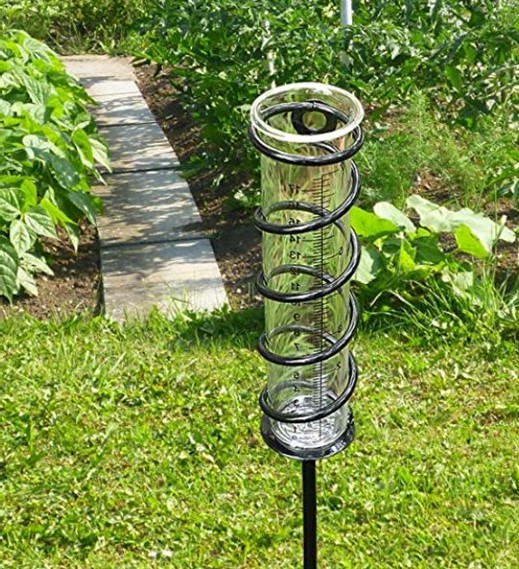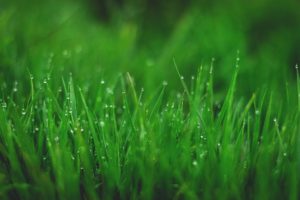How Much Water Does My Garden Need?
by Elizabeth Myers · Published · Updated
The Hot Dry Dog Days of Summer - It may seem, in the summer, like it is never raining enough and your lawn and garden need water daily. Before you drag hoses and sprinklers all over the yard, it’s important to know how much or how little water has fallen from the sky or been collected from your supplemental watering efforts. Installing a rain gauge is a quick and simple way to find out. It's an easy way to measure the amount of water falling on your grass. And you can use the measurements from your gauge to determine when and how much additional water is needed. 
Using a Rain Gauge - A rain gauge is a simple tool with a small collector tube that has measurement marks on the side. Most gauges have spikes or are attached to a short pole that can be stuck into the soil on your lawn. You can find inexpensive rain gauges at hardware stores and online. Many gauges are less than $15.00.
Getting a Good Reading - To obtain the best reading, place your gauge away from trees or buildings that can drip excess rainwater into the collection tube. Consider all sources of water that may add to the gauge such as rain, irrigation system, and hand watering. Once you have placed your gauge in the appropriate spot, read the results each day and record them in a convenient place like a garden journal. Then empty any collected water from the gauge so the next reading is not cumulative, and you can take a new reading for the next 24-hour period.
Generally, About an Inch a Week - Most lawns need at least an inch of water each week during the summer. If you have recorded at least an inch of water in your gauge, check the moisture in your soil and the condition of the grass b efore adding more water. As you did for your lawn, the same is true for vegetables in your summer garden. Apply about 1 inch of water over the surface area of the garden bed per week. That is equivalent to 0.623 gallons per sq ft. Using that rate, a 32 sq ft bed requires 20 gallons of water per week (32 sq ft x 0.623 gallons per sq ft = 20 gallons per week).
efore adding more water. As you did for your lawn, the same is true for vegetables in your summer garden. Apply about 1 inch of water over the surface area of the garden bed per week. That is equivalent to 0.623 gallons per sq ft. Using that rate, a 32 sq ft bed requires 20 gallons of water per week (32 sq ft x 0.623 gallons per sq ft = 20 gallons per week).
Here are a few key tips - Cool-season grasses like the fescues and Kentucky Bluegrass stress more readily in the hot summer, so they may look like they need daily watering when they don't. Some shrubs and bushes like Hydrangea may wilt from the hot sun but may not require watering. Here's where your pointer finger inserted into the soil may be your best gauge of dry versus wet soil.
Finally, the best time to water is early in the morning to reduce the amount of water that evaporates in the hot sun. To protect against plant diseases and fungus, don't water at night. Remember using a rain gauge daily can help you make smart decisions about when and how much water your garden and lawn need. It will save you time and money, and bring you the satisfaction that comes with working in concert with Mother Nature. (For more information see: Water-wise Lawn and Landscape Care and Summer Lawn Management: Watering the Lawn.)
Photo Credits: Gauge-SYCozupy Manufacture Materials, Grass-Darius Cotoi, Unsplash
